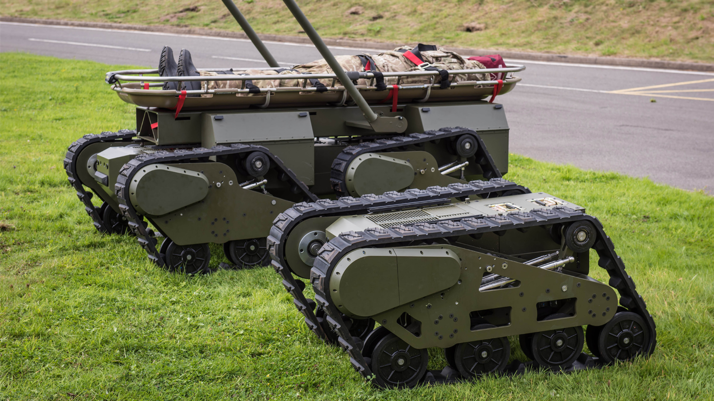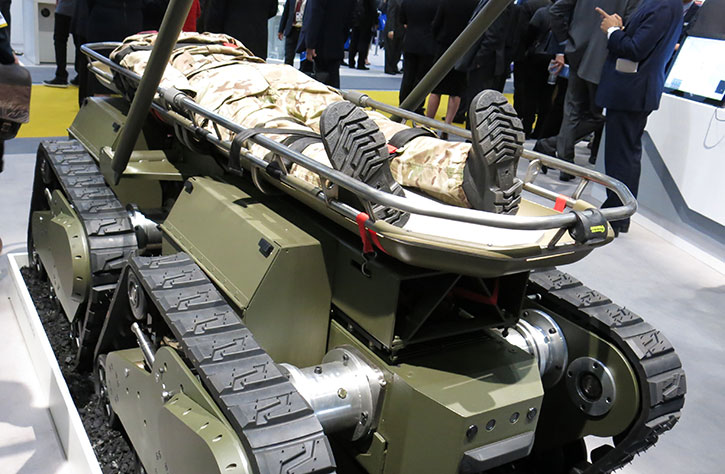BAE Systems’ Ironclad UGV was unveiled at DSEI 2017. This tracked robot is designed to be small enough to negotiate tight urban environments and maintains the mobility needed for cross-country operation. It can be carried on a trailer or pickup truck or join other vehicles in a convoy.
One of the unique features is the ability to connect two Ironclads, to form a longer UGV that carries up to 500 kg of payload or a patient on a specialized stretcher, freeing up at least two soldiers who would otherwise be needed to carry the casualty.
Related post: Ironclad UGV from Ukraine

The vehicle is currently teleoperated by a human operator, but BAE Systems is developing autonomy functions to enable it to operate as part of a battlegroup, interact with other UGVs and ground troops and follow mission objectives. Among the missions currently supported by teleoperation functions are remotely controlled area denial, utilizing a weapon station combined with imaging and audio sensors, and Explosive ordnance disposal, operating a manipulator arm and disruptors.






















